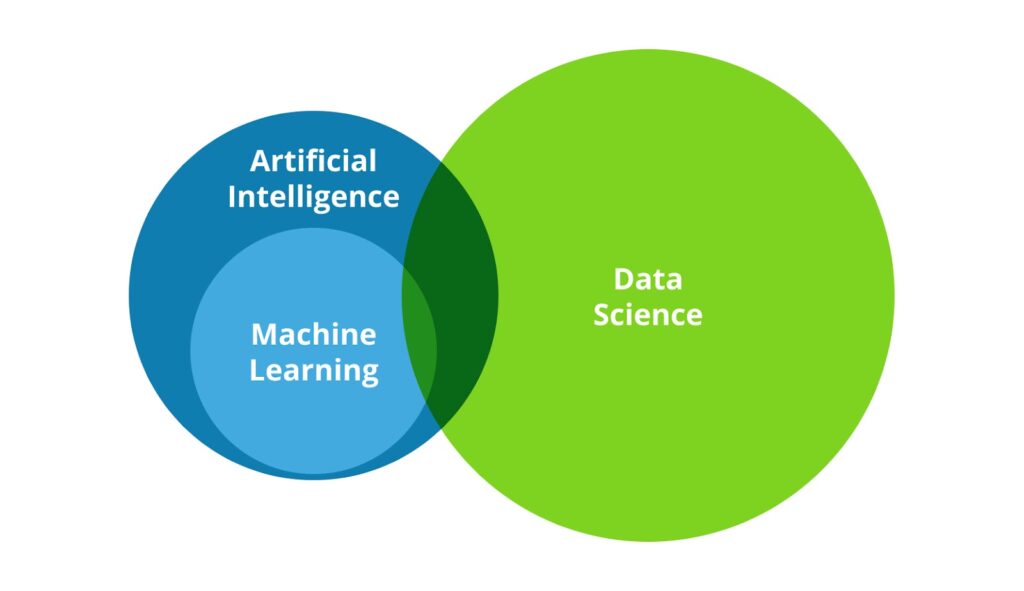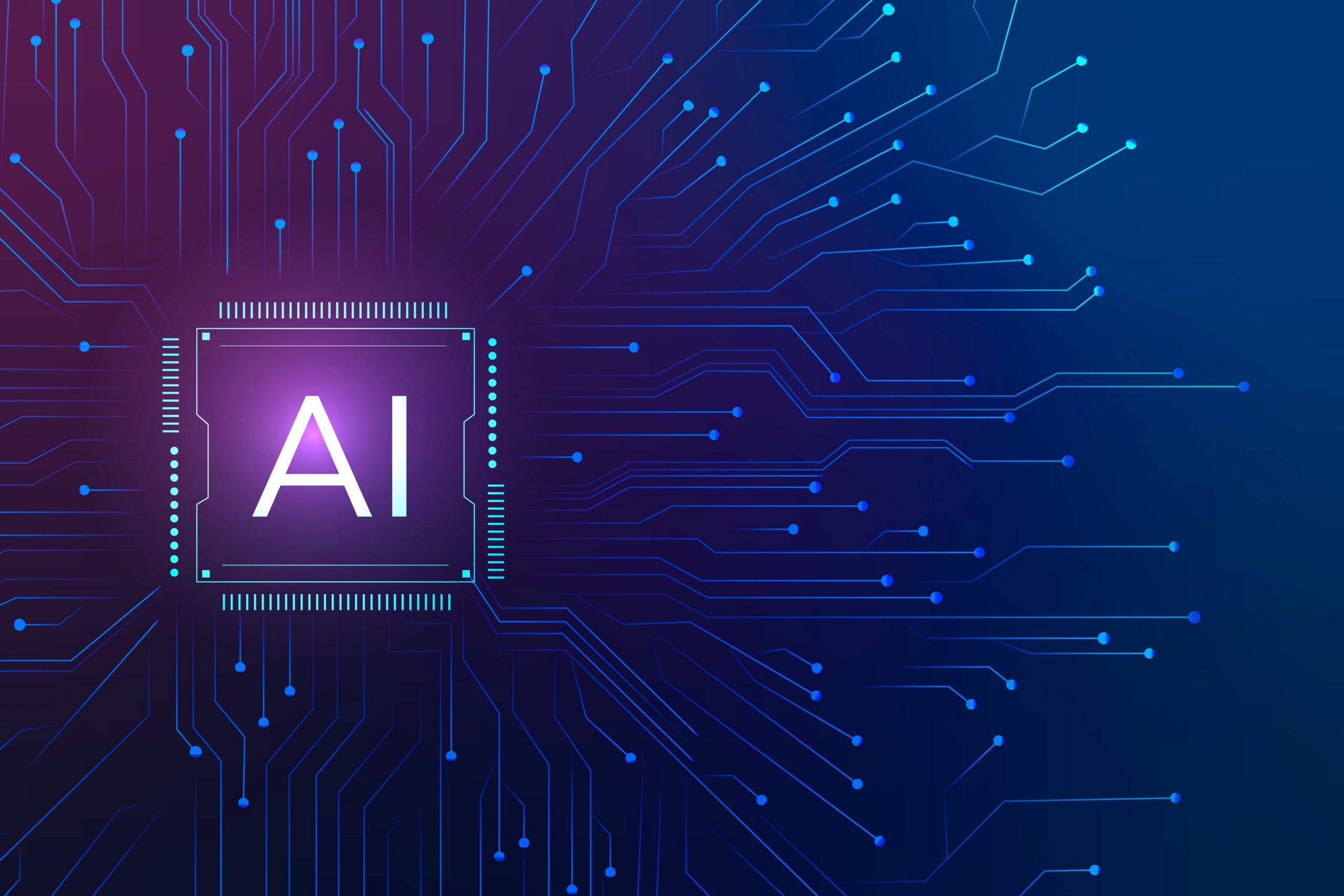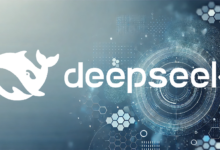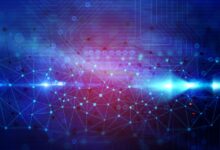Author: Volnyanskyi A.
Data has become the foundation, the basic underpinning of everything happening in the modern world. Data brings profit to businesses, helps save lives, and accomplishes many other important tasks. However, it’s not enough to just have large volumes of data; they must be correctly interpreted to derive real benefits. This is where artificial intelligence (AI), machine learning (ML), and, of course, data science (DS) come into play. Together, they have become the driving force transforming virtually every aspect of our lives and opening up a multitude of new opportunities. This article delves into what lies behind each of these three terms and how they shape our future.
Definition of AI and its properties
Artificial intelligence (AI) is a branch of computer science focused on creating systems that imitate human cognitive functions, particularly the ability to analyze data and make decisions based on it. The essence of the term “artificial intelligence” is well conveyed by the literal translation of the word “intelligence”—the “ability to reason intelligently.” AI systems are already capable of performing creative tasks that were previously considered the exclusive domain of humans.
What else can artificial intelligence do:
- Understands natural language and generates text in the same way a human does.
- Perceives and processes information from the surrounding environment using sensors.
- Makes decisions and solves problems using knowledge gained from data analysis.
Artificial intelligence has the potential to significantly expand human capabilities. It automates routine tasks, predicts future events, and is used to generate new content (handled by generative AI, also known as GenAI), as well as to develop new products and services. AI is already transforming many aspects of our lives and influencing how we work, learn, relax, and interact with the world around us.
It is believed that the “intelligence” of artificial intelligence can vary: it can be either strong or weak. The difference between strong and weak AI is that the former understands the meaning of the information it works with (as in the Turing test) and is not limited in the range of tasks it can solve, while the latter is capable of solving only specific tasks (like playing chess or recognizing faces in images).
Where artificial intelligence is already used:
- Image and video recognition: Detects faces and inanimate objects.
- Natural language processing: Translates and generates new texts, answers questions.
- Robotics: Controls robots and endows them with the ability to perform physical actions.
- Expert systems: Provides advice and makes decisions in various fields, from finance to medicine.
- Machine learning: Learns from data and improves its analysis and decision-making skills.

Let’s delve into the last point in more detail. Machine learning is a branch of AI that mimics the activity of the human brain: it analyzes large volumes of information to solve specific tasks.
Definition of ML as a method of AI
Machine learning (ML) is an approach to data analysis that enables an analytical system to learn through solving numerous similar tasks. During the learning process, large volumes of data (both structured and unstructured) are used, based on which AI identifies patterns and regularities. ML is a crucial component of artificial intelligence as it allows AI to adapt to new situations, improve its skills, and solve complex problems. ML does this indirectly, by leveraging the experience gained from performing previous similar tasks.
The set of instructions according to which learning takes place is called a machine learning algorithm. The outcome of this learning process is a machine learning model. This model is used in tasks such as object classification, anomaly detection, regression, or event prediction. In other words, these are tasks that are difficult, impossible, or impractical (too labor-intensive) to solve using standard software or analytical methods.
If we consider the practical applications of ML, it often overlaps with the list provided for AI. Here are several practical examples of how machine learning is used in various tasks:
- In the financial sector: Helps detect fraud, assess credit risk, and automate trading operations.
- In manufacturing: Predicts equipment failures, optimizes technological processes, and controls the quality of finished products.
- In the gaming industry: Contributes to the creation of realistic game characters and analyzes game statistics.
- In scientific research: Models various natural phenomena and aids in the discovery of new drugs.
- In marketing: Segments audiences, analyzes the effectiveness of marketing activities, helps create personalized advertising campaigns, and makes recommendations based on user preferences.
Andrey Mikhaylenko, COO of Colobridge:
“Our subsidiary company, Beinf, helps unlock the potential of artificial intelligence, machine learning, and analytics to enhance business profitability. By analyzing data on each client, we can transform it into effective strategies that elevate client communication to a new level. We take on the full range of tasks from data audit and management to data analysis and personalized content creation. Managing client relationships based on data has never been easier: with us, you gain access not only to industry expertise but also to a complete technical solution. The necessary computing power for specific tasks is provided by the Colobridge platform.”
We move forward and explain what Data Science is and how this field is connected to the two previous technologies.
Definition of Data Science
Data Science studies the problems of data analysis, processing, and presentation, combining mathematics, statistics, advanced analytics, artificial intelligence, and machine learning. The task of a Data Science specialist (also known as a data scientist) is to extract useful information from large datasets that can be used to improve outcomes in business, science, and other fields.
Data Science can be figuratively described as a “data tamer” who transforms, analyzes, and presents data in a convenient format for further use. The results of this work become the “fuel” for machine learning. An already trained model then becomes one of the tools of artificial intelligence, enabling it to perform tasks such as facial recognition, fraud detection, or creating personalized recommendations. Thus, the role and scope of Data Science greatly overlap with Artificial Intelligence and Machine Learning: together, they are key components of a vast ecosystem of products and solutions that drive innovation and progress in various areas.
Learn more about how these technologies can help your business, and how the Colobridge team can provide expert and technical support for implementing solutions based on them.





